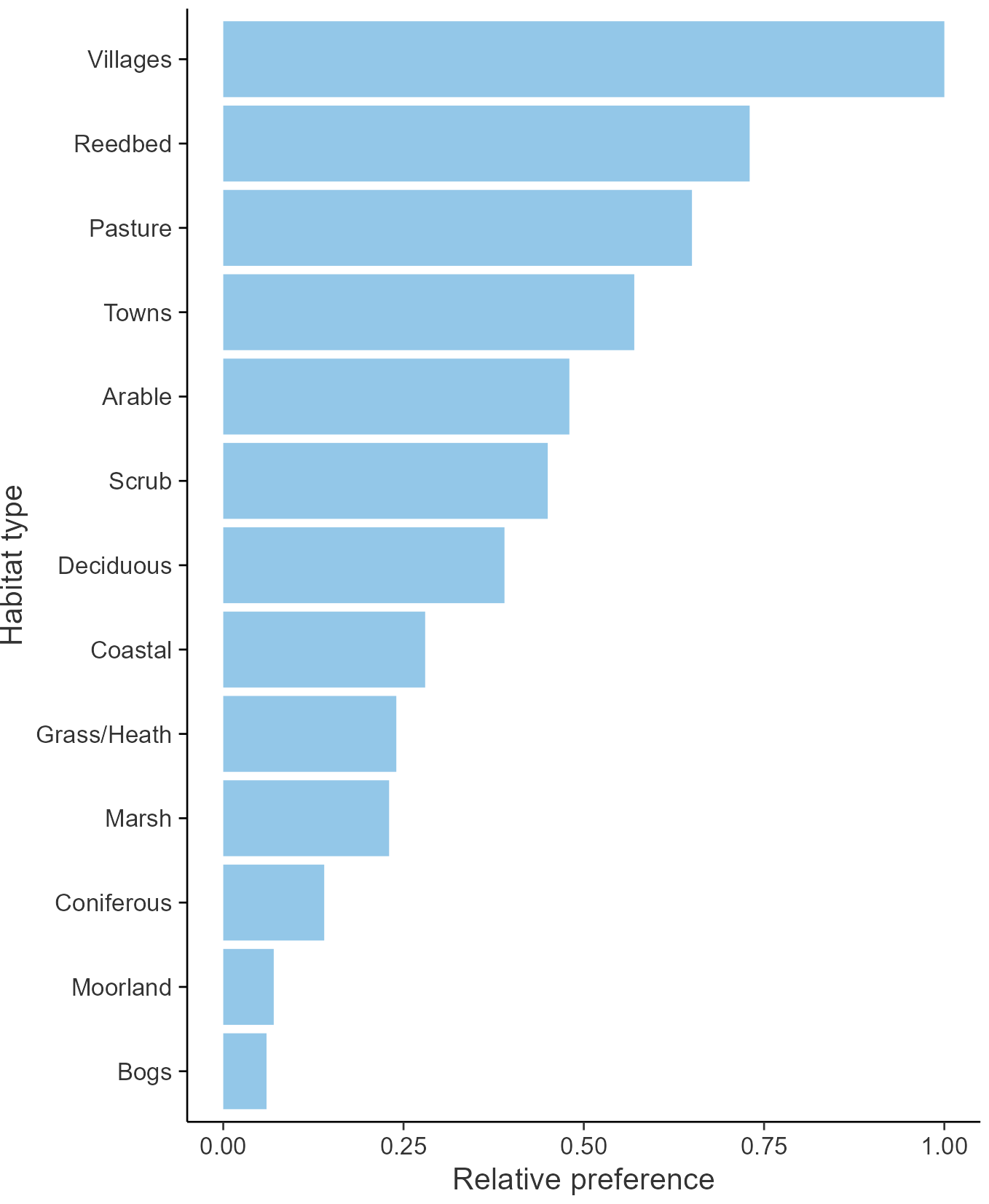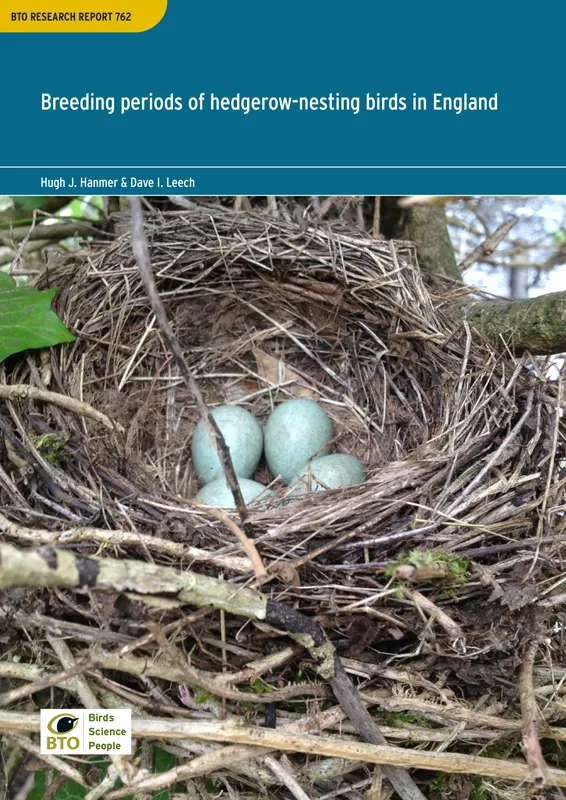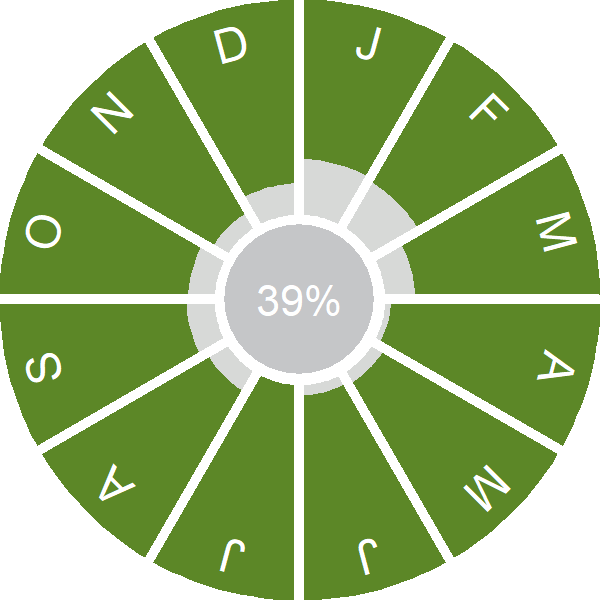Goldfinch

Introduction
This colourful and vocal finch is found throughout Britain & Ireland on all but the highest ground.
With its red face and bright yellow wingbars, the Goldfinch is a striking species. Newly-fledged juveniles lack the red facial plumage. Males and females look alike. UK Goldfinch numbers have risen steadily in recent decades, as birds have taken advantage of bird food provided in gardens. The species is on the UK Green List.
Goldfinches can be found throughout the year across Britain & Ireland. When not visiting garden feeders, they form can flocks with other finches, and can be seen moving through trees and on stubble fields in search of food.
- Our Trends Explorer gives you the latest insight into how this species' population is changing.

Key Stats
Identification
ID Videos
This section features BTO training videos headlining this species, or featuring it as a potential confusion species.
#BirdSongBasics: Greenfinch and Goldfinch
GBW: Goldfinch and Greenfinch
Songs and Calls
Song:
Call:
Flight call:
Status and Trends
Conservation Status
Population Change
Goldfinch abundance fell sharply from the mid 1970s until the mid 1980s, but the decline was both preceded and followed by significant population increases. The current upturn has lifted the species from the amber list of conservation concern into the green category, and has been accompanied by an increase in its use of gardens for winter feeding. The BBS map of change in relative density between 1994-96 and 2007-09 indicates that increases over that period occurred almost everywhere, with the exception of the far southeast and more recent BBS data confirm that increases have continued over the period 2008-2018 in all four countries of the UK. There has been an moderate increase across Europe since 1980 (PECBMS: PECBMS 2020a>). A strong increase has been recorded in the Republic of Ireland since 1998 (Crowe 2012).
Distribution
Goldfinches are widely distributed throughout Britain & Ireland in winter, though largely absent from the interior of northwest Scotland. The breeding season is very similiar, although densities are lower in northern Britain and in upland areas.
Occupied 10-km squares in UK
or view it on Bird Atlas Mapstore.
or view it on Bird Atlas Mapstore.
European Distribution Map
Distribution Change
Goldfinch populations have increased since the early 1990s and this is reflected in 10% and 27% range expansions in Britain and Ireland respectively between 1988–91 and 2008–11. Gains in Britain are concentrated around the upland fringe in Scotland whilst gains in Ireland are a reversal of losses there between the first two breeding atlases; these fluctuations appear to be real and not an artefact of coverage.
Change in occupied 10-km squares in the UK
or view it on Bird Atlas Mapstore.
or view it on Bird Atlas Mapstore.
Seasonality
Goldfinch is recorded throughout the year on up to 50% of complete lists.
Weekly pattern of occurrence
The graph shows when the species is present in the UK, with taller bars indicating a higher likelihood of encountering the species in appropriate regions and habitats.

Habitats
Breeding season habitats
Relative frequency by habitat
The graph shows the habitats occupied in the breeding season, with the most utilised habitats shown at the top. Bars of similar size indicate the species is equally likely to be recorded in those habitats.

Movement
Britain & Ireland movement
Foreign locations of birds ringed or recovered in Britain & Ireland
Dots show the foreign destinations of birds ringed in Britain & Ireland, and the origins of birds ringed overseas that were subsequently recaptured, resighted or found dead in Britain & Ireland. Dot colours indicate the time of year that the species was present at the location.
- Winter (Nov-Feb)
- Spring (Mar-Apr)
- Summer (May-Jul)
- Autumn (Aug-Oct)

European movements
EuroBirdPortal uses birdwatcher's records, such as those logged in BirdTrack to map the flows of birds as they arrive and depart Europe. See maps for this species here.
The Eurasian-African Migration Atlas shows movements of individual birds ringed or recovered in Europe. See maps for this species here.
Biology
Productivity and Nesting
Nesting timing
Egg measurements
Clutch Size
Incubation
Fledging
Survival and Longevity
Survival is shown as the proportion of birds surviving from one year to the next and is derived from bird ringing data. It can also be used to estimate how long birds typically live.
View number ringed each year in the Online Ringing Report.
lifespan
Survival of adults
Survival of juveniles
Biometrics
Wing length and body weights are from live birds (source).
Wing length
Body weight
Ring Size
Classification, names and codes
Classification and Codes
- Order: Passeriformes
- Family: Fringillidae
- Scientific name: Carduelis carduelis
- Authority: Linnaeus, 1758
- BTO 2-letter code: GO
- BTO 5-letter code: GOLDF
- Euring code number: 16530
Alternate species names
- Catalan: cadernera europea
- Czech: stehlík obecný
- Danish: Stillits
- Dutch: Putter
- Estonian: ohakalind
- Finnish: tikli
- French: Chardonneret élégant
- Gaelic: Deargan-fraoich
- German: Stieglitz
- Hungarian: tengelic
- Icelandic: Þistilfinka
- Irish: Lasair Choille
- Italian: Cardellino
- Latvian: dadzitis, ciglis
- Lithuanian: europinis dagilis
- Norwegian: Stillits
- Polish: szczygiel
- Portuguese: pintassilgo-europeu / pintassilgo
- Slovak: stehlík obycajný
- Slovenian: lišcek
- Spanish: Jilguero europeo
- Swedish: steglits
- Welsh: Nico
- English folkname(s): Redhead, Thistle Finch
Research
Causes of Change and Solutions
Causes of change
The population changes can be explained almost entirely by changes in annual survival rates, which may have resulted from a reduction in the availability of weed seeds, due to agricultural intensification, and subsequent increased use of other food sources such as garden bird tables and niger feeders.
Further information on causes of change
The population changes can be explained almost entirely by changes in annual survival rates, which may have resulted from a reduction in the availability of weed seeds, due to agricultural intensification, and subsequent increased use of other food sources such as garden bird tables and niger feeders; for migrants, the effects of environmental change or increased hunting pressure in France and Iberia, where the majority then wintered, may have temporarily reduced survival rates (Siriwardena et al. 1999). There have been no clear changes in productivity as measured by NRS and CES. The recent severe losses of Greenfinches from gardens and the greater variety of food offered by home owners are likely to have afforded Goldfinches far better access to provided food (Plummer et al. 2019) . A strong trend towards earlier laying may be partly explained by recent climate change (Crick & Sparks 1999).
Information about conservation actions
Goldfinch numbers have continued to increase whilst numbers of Greenfinches and Chaffinches have recently declined due to trichomonosis; hence there are currently no conservation concerns for this species and no specific conservation actions are currently required. Goldfinch has almost certainly benefited from the provision of a wider variety of bird food in gardens (Plummer et al. 2019) and this is likely to continue to support the species as long as it does not become susceptible to trichomonosis. Other conservation actions and policies aimed at improving and increasing the availability of wild seeds for farmland birds may also help Goldfinches, e.g. set-aside, buffer strips and planting wild bird seed mixtures.
Publications (2)
Breeding periods of hedgerow-nesting birds in England
Author: Hanmer, H.J. & Leech, D.I.
Published: Spring 2024
Hedgerows form an important semi-natural habitat for birds and other wildlife in English farmland landscapes, in addition to providing other benefits to farming. Hedgerows are currently maintained through annual or multi-annual cutting cycles, the timing of which could have consequences for hedgerow-breeding birds.The aim of this report is to assess the impacts on nesting birds should the duration of the management period be changed, by quantifying the length of the current breeding season for 15 species of songbird likely to nest in farmland hedges. These species are Blackbird, Blackcap, Bullfinch, Chaffinch, Dunnock, Garden Warbler, Goldfinch, Greenfinch, Linnet, Long-tailed Tit, Robin, Song Thrush, Whitethroat, Wren and Yellowhammer.
05.03.24
Reports Research reports

The composition of British bird communities is associated with long-term garden bird feeding
Author: Plummer, K.E., Risely, K., Toms, M.P. & Siriwardena, G.M.
Published: 2019
Newly published research from BTO shows how the popular pastime of feeding the birds is significantly shaping garden bird communities in Britain. The populations of several species of garden birds have grown in number, and the diversity of species visiting feeders has also increased.
21.05.19
Papers


